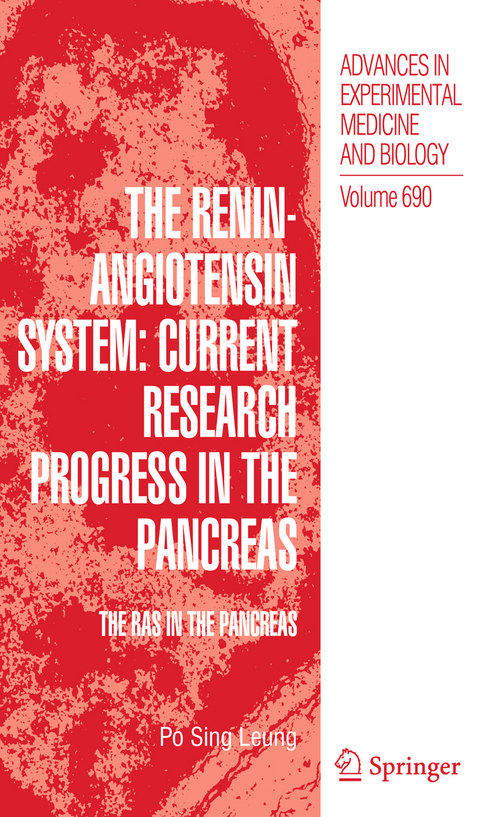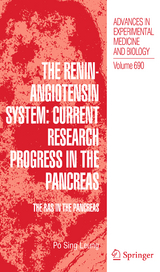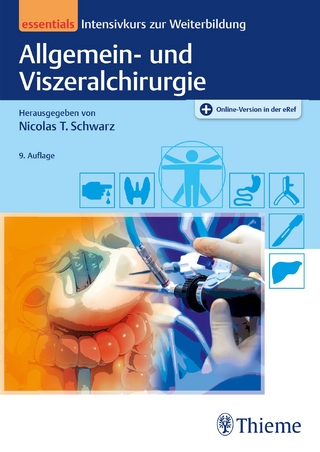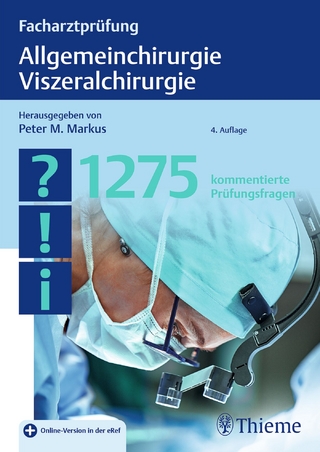The Renin-Angiotensin System: Current Research Progress in The Pancreas
The RAS in the Pancreas
Seiten
Highlighting the role local renin-angiotensin systems (RAS) play in pancreatic disease, this review presents the latest research advances in the field. These findings suggest both preventative measures and treatment for pancreatic disease.
The human pancreas consists of two organs in one: the exocrine gland made up of pancreatic acinar cells and duct cells that produce digestive enzymes and sodium bicarbonate, respectively; the endocrine gland made up of four islet cells, namely alpha-, beta-, delta- and PP-cells that produce glucagon, insulin, somatostatin and pancreatic polypeptide, respectively. While the physiological role of exocrine p- creas is to secrete digestive enzyme responsible for our normal digestion, absorption and assimilation of nutrients, the endocrine pancreas is to secrete islet peptide h- mones maintaining our glucose homeostasis. The pancreatic functions are nely regulated by neurocrine, endocrine, paracrine and/or intracrine mechanisms. Thus, dysregulation of these pathways should have signi cant impacts on our health and disease. Nevertheless, the underlying mechanisms by which pancreatic functions are regulated remain poorly understood. Recent basic science and clinical studies con rm myriad physiological and pathophysiological roles of the tissue renin-angiotensin systems (RAS).
Of parti- lar interest is the recent identi cation of a local and functional RAS in the pancreas, which in uences both its exocrine and endocrine function. Its role in the pat- genesis of pancreatic diseases including diabetes and pancreatitis is increasingly recognized, as is the therapeutic potential of RAS antagonism: RAS blockade l- its disease progression of type 2 diabetes mellitus and impaired glucose tolerance, and may also protect against pancreatic in ammation.
The human pancreas consists of two organs in one: the exocrine gland made up of pancreatic acinar cells and duct cells that produce digestive enzymes and sodium bicarbonate, respectively; the endocrine gland made up of four islet cells, namely alpha-, beta-, delta- and PP-cells that produce glucagon, insulin, somatostatin and pancreatic polypeptide, respectively. While the physiological role of exocrine p- creas is to secrete digestive enzyme responsible for our normal digestion, absorption and assimilation of nutrients, the endocrine pancreas is to secrete islet peptide h- mones maintaining our glucose homeostasis. The pancreatic functions are nely regulated by neurocrine, endocrine, paracrine and/or intracrine mechanisms. Thus, dysregulation of these pathways should have signi cant impacts on our health and disease. Nevertheless, the underlying mechanisms by which pancreatic functions are regulated remain poorly understood. Recent basic science and clinical studies con rm myriad physiological and pathophysiological roles of the tissue renin-angiotensin systems (RAS).
Of parti- lar interest is the recent identi cation of a local and functional RAS in the pancreas, which in uences both its exocrine and endocrine function. Its role in the pat- genesis of pancreatic diseases including diabetes and pancreatitis is increasingly recognized, as is the therapeutic potential of RAS antagonism: RAS blockade l- its disease progression of type 2 diabetes mellitus and impaired glucose tolerance, and may also protect against pancreatic in ammation.
The Pancreas.- Overview of the Pancreas.- Physiology of the Pancreas.- Common Pancreatic Disease.- The Renin-Angiotensin System (RAS).- Circulating RAS.- Local RAS.- Pancreatic RAS.- Research Progress Of The Ras In Pancreas.- Basic Techniques for Pancreatic Research.- Current Research of the RAS in Diabetes Mellitus.- Current Research Concerning the RAS in Pancreatic Stem Cells.- Current Research of the RAS in Pancreatitis and Pancreatic Cancer.
| Reihe/Serie | Advances in Experimental Medicine and Biology ; 690 |
|---|---|
| Zusatzinfo | XVI, 208 p. |
| Verlagsort | Dordrecht |
| Sprache | englisch |
| Maße | 155 x 235 mm |
| Themenwelt | Medizinische Fachgebiete ► Chirurgie ► Viszeralchirurgie |
| Medizinische Fachgebiete ► Innere Medizin ► Diabetologie | |
| Medizinische Fachgebiete ► Innere Medizin ► Endokrinologie | |
| Medizinische Fachgebiete ► Innere Medizin ► Gastroenterologie | |
| Studium ► 1. Studienabschnitt (Vorklinik) ► Biochemie / Molekularbiologie | |
| Studium ► 1. Studienabschnitt (Vorklinik) ► Physiologie | |
| Naturwissenschaften ► Biologie ► Humanbiologie | |
| ISBN-10 | 90-481-9059-2 / 9048190592 |
| ISBN-13 | 978-90-481-9059-1 / 9789048190591 |
| Zustand | Neuware |
| Haben Sie eine Frage zum Produkt? |
Mehr entdecken
aus dem Bereich
aus dem Bereich
Buch | Softcover (2022)
Urban & Fischer in Elsevier (Verlag)
58,00 €




